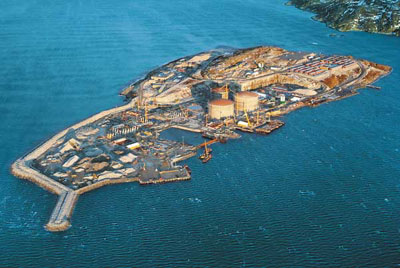Operator: StatoilHydro
 Snohvit map (courtesy of Statoil)
Snohvit map (courtesy of Statoil)The Snøhvit gas fields development comprises three fields – Snøhvit, Albatross and Askeladd. These lie in the Barents Sea, about 140km north-west of Hammerfest in northern Norway. The fields were discovered in 1984 in 250m to 345m of water and extend across seven production licences.
In April 2008, Statoil announced carbon storage had started on its Snøhvit field – Statoil is reinjecting Snøhvit's CO2 emissions into the ground beneath the gas-bearing formation on the field. The process will reduce CO2 emissions by 700,000t a year when Snøhvit is at full capacity, it is estimated. This is the equivalent of emissions from 280,000 cars.
Natural gas is first pumped to a carbon capture plan at Melkøya. Here, 5% to 8% of CO2 is removed from the gas and piped back to a 2,600m-deep sandstone formation at Snøhvit, where it sits under the seabed
The storage reservoir is at a depth of about 2500 m, so the technical challenges for monitoring are quite different from those at for example Sleipner.
 Sky view (courtesy of Statoil)
Sky view (courtesy of Statoil)

